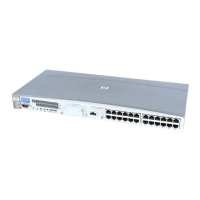case that the RoboticControlHostName and the Hosts have the specified
library installed.
In case that you try to configure a library with a robotic control host on a client
which does not have a library installed, the configuration will not be successful
(parameter –hosts is used).
In a MoM environment and with the -mom option specified, if the
RoboticControlHostName parameter is specified without the –hosts or
–hostsfile options, the sanconf command will configure a library on all
hosts which are connected to it. For example, we have two hosts using the same
CMMDB, but they can be on a different Cell Manager. If the hosts are both
connected to the same library and only one of them is specified in the
RoboticControlHostName, sanconf will configure two libraries with a
robotic control on each host. The same happens in case of a host name which
does not have the specified library installed.
If the ListFileName parameter is used together with the
RoboticControlHost but without the –hosts or —hostsfile option, the
RoboticControlHost parameter will be ignored and a library will be created
on all clients which are listed in the file.
When the RoboticControlHostName is used with the –hosts or
–hostsfile parameter it limits a library configuration on a specified client.
Robotics will be configured on the host which is specified with the
RoboticControHostName and on the drives on the host specified with the
–hosts or –hostsfile option. The configuration will be successful only in
case that the RoboticControlHostName and the Hosts have the specified
library installed.
In case that you try to configure a library with a robotic control host on a client
which does not have the library installed, the configuration will not be successful.
Additionally, if you try to configure a library on a host which does not use the
CMMDB, but its own (local) MMDB, the configuration will fail, whether you try
to configure a library which is also installed on clients in the same CMMDB or
not.
When the DeviceTypeNumber parameter is used, the drives of that type will
be configured in the library. When the DeviceTypeNumber is not specified,
the DLT drive types are used as the default. Only one type number may be
specified per library. If you use the ".DeviceTypeExtension" parameter
instead of the DeviceTypeNumber parameter, you can specify the device type
extension of the tape device to be configured in the library.
In the following table, DTN stands for DeviceTypeNumber, and DTE stands
for DeviceTypeExtension.
DTN DTE
396

